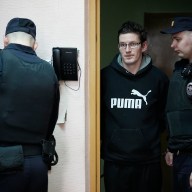
As the next hurricane season approaches, East Coast officials are learning to protect themselves from nature’s wrath.
Hurricane Sandy pummeled the East Coast last October, destroying houses and shutting down power and transit systems.
In response, local officials began brainstorming how to better protect East Coast cities.
In New York, Gov. Andrew Cuomo proposed using $171 million of federal Sandy aid to buy properties at risk for repeated flooding. He would keep that waterfront land uninhabited.
With fewer people in vulnerable areas, saving lives would be easier, said David Abramson, deputy director of Columbia University’s National Center for Disaster Preparedness. “We didn’t evacuate enough people,” he told Metro. “Obviously people still stayed in harm’s way.”
In another effort, Manhattan Borough President Scott Stringer reaffirmed his East River Blueways project to curb flooding on the island.
The $3.5 million project would extend wetlands along the southeastern shore to provide recreational areas and a buffer to floodwaters, especially for the coastal 14th Street Con Edison power plant, which exploded during Sandy and left lower Manhattan in the dark for days.
Scientists suggest that power loss and fuel shortage could be mitigated through microgrids and alternative energy sources.
“Solar [energy] itself pays itself off in eight to 10 years,” said Mark Jacobson, director of Stanford University’s Atmosphere and Energy department. “At least with the solar, you can generate some energy, and especially with wind you can generate energy at night.”
Although cars faced long gas lines and fuel rationing in New York, buses ran within 24 hours after the storm.
“What Sandy showed us is that part of the reason New York did so well afterwards was that we had so many modes of transportation,” said Sarah Kaufman, research associate at New York University’s Rudin Center for Transportation.
But in face of the unknown, Kaufman said cooperation and sharing ideas are key to preparedness.
“[Boston was] the head of the inspiration for shutting down their transit systems before a storm,” she said. “The MTA learned from Boston after 2010.”
















